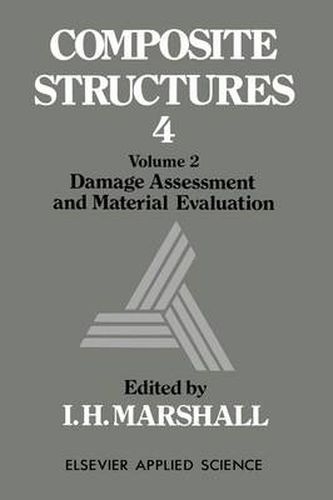Readings Newsletter
Become a Readings Member to make your shopping experience even easier.
Sign in or sign up for free!
You’re not far away from qualifying for FREE standard shipping within Australia
You’ve qualified for FREE standard shipping within Australia
The cart is loading…






This title is printed to order. This book may have been self-published. If so, we cannot guarantee the quality of the content. In the main most books will have gone through the editing process however some may not. We therefore suggest that you be aware of this before ordering this book. If in doubt check either the author or publisher’s details as we are unable to accept any returns unless they are faulty. Please contact us if you have any questions.
The papers contained herein were presented at the Fourth International Conference on Composite Structures (ICCS/4) held at Paisley College of Technology, Scotland in July 1987. The Conference was organised and sponsored by Paisley College of Technology. It was co-sponsored by the Scottish Development Agency, the National Engineering Laboratory, the US Air Force European Office of Aerospace Research and Development and the US Army Research, Development and Standardisation Group UK. It forms a natural and ongoing progression from the highly successful First, Second and Third International Conferences on Composite Structures (ICCS/l, ICCS/2 and ICCS/3) held at Paisley in 1981, 1983 and 1985 respectively. There is little doubt that composite materials are rightfully claiming a prominent role in structural engineering in the widest sense. Moreover, the range and variety of useful composites has expanded to a level inconceivable a decade ago. However, it is also true that this increasing utilisation has generated an enhanced awareness of the manifold factors which dictate the integrity of composite structures. This is indeed a healthy attitude to a relatively new dimension in structural engineering which will have an increasingly dominant role as the century progresses. Both the diversity of application of composites in structural engineering and the endeavours which will ensure their fitness for purpose are reflected herein.
$9.00 standard shipping within Australia
FREE standard shipping within Australia for orders over $100.00
Express & International shipping calculated at checkout
This title is printed to order. This book may have been self-published. If so, we cannot guarantee the quality of the content. In the main most books will have gone through the editing process however some may not. We therefore suggest that you be aware of this before ordering this book. If in doubt check either the author or publisher’s details as we are unable to accept any returns unless they are faulty. Please contact us if you have any questions.
The papers contained herein were presented at the Fourth International Conference on Composite Structures (ICCS/4) held at Paisley College of Technology, Scotland in July 1987. The Conference was organised and sponsored by Paisley College of Technology. It was co-sponsored by the Scottish Development Agency, the National Engineering Laboratory, the US Air Force European Office of Aerospace Research and Development and the US Army Research, Development and Standardisation Group UK. It forms a natural and ongoing progression from the highly successful First, Second and Third International Conferences on Composite Structures (ICCS/l, ICCS/2 and ICCS/3) held at Paisley in 1981, 1983 and 1985 respectively. There is little doubt that composite materials are rightfully claiming a prominent role in structural engineering in the widest sense. Moreover, the range and variety of useful composites has expanded to a level inconceivable a decade ago. However, it is also true that this increasing utilisation has generated an enhanced awareness of the manifold factors which dictate the integrity of composite structures. This is indeed a healthy attitude to a relatively new dimension in structural engineering which will have an increasingly dominant role as the century progresses. Both the diversity of application of composites in structural engineering and the endeavours which will ensure their fitness for purpose are reflected herein.